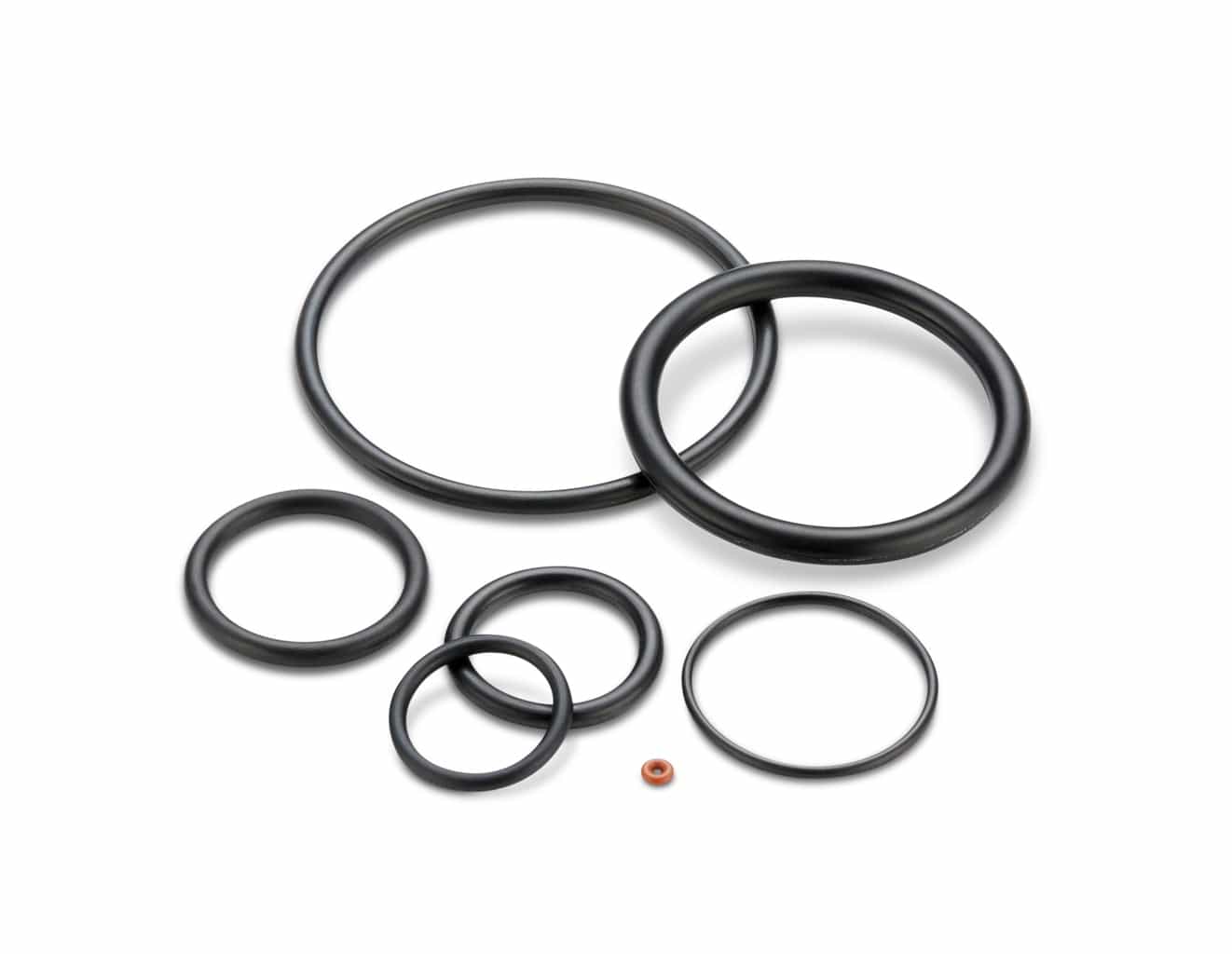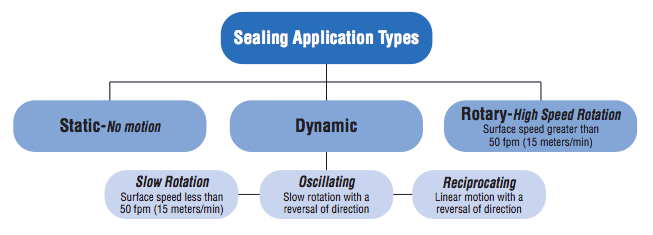
Identifying A Sealing Application Type
Although sealing applications can be classified in many different ways, a common method for classifying sealing applications is by the type of motion experienced by the application.
The common application types are depicted below. General sealing principles common to all of the seal types are discussed on the following section.

Sealing Tips
- Provide detailed seal installation and assembly instructions, especially if the unit could be serviced
by the end-user of the product. When appropriate or required, specify the use of OEM sealing parts. - Within reason, the larger the cross-section, the more effective the seal.
- Do not seal axially and radially at the same time with the same O-Ring or Quad-Ring® Brand Seal.
- Don’t use a seal as a bearing to support a load or center a shaft. This will eventually cause seal failure.
- Lubricate the seal and mating components with an appropriate lubricant before assembling the unit.
- Keep the seal stationary in its groove – don’t let it spin with the rotating member.
- When using back-up rings, increase the groove width by the maximum thickness of the back-up ring.
- With a face seal, don’t try to seal around a square corner. Corners must have a minimum radius of 4 times the seal cross-section.
Selecting the Seal Material
When selecting the seal material for the application, carefully consider:
- The primary fluids which the O-Ring or Quad-Ring® Brand will be sealing
- Other fluids to which the seal will be exposed, such as cleaning fluids or lubricants
- The suitability of the material for the application’s temperature extremes – hot and cold
- The presence of abrasive external contaminants
- The presence of ozone from natural sources and electric motors, which can attack rubber
- Exposure to processes such as sterilization by gas, autoclaving, or radiation
- Exposure to ultraviolet light and sunlight, which can decompose rubber
- The potential for out-gassing in vacuum applications
- Don’t forget about water – it covers two-thirds of the Earth’s surface